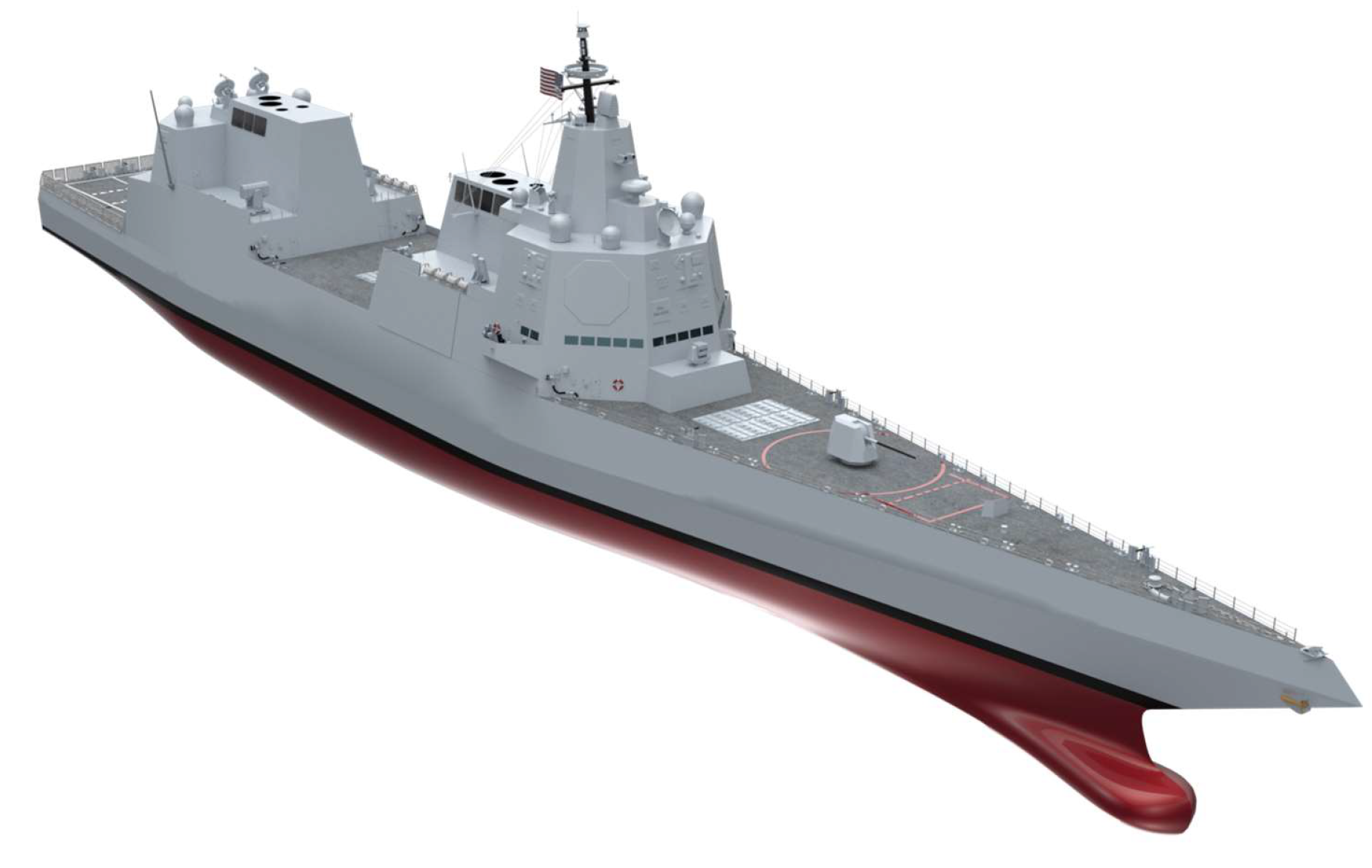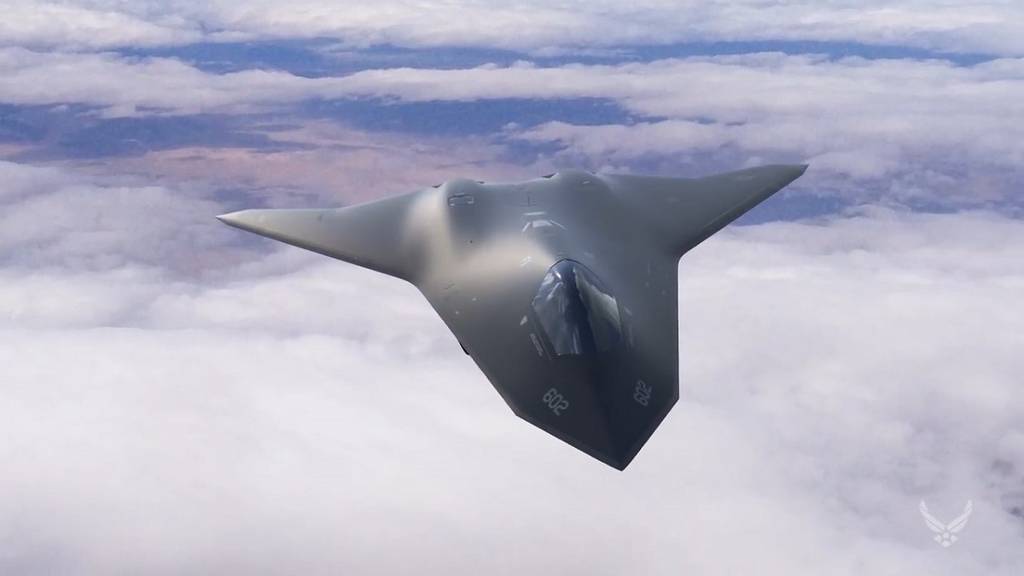
ARLINGTON, Va. – First the fighter, then the destroyer and finally the submarine. That’s the order the Navy is set to introduce its next three major acquisition programs in the 2030s, Chief of Naval Operations Adm. Mike Gilday said last week.
The Navy’s next large surface warship program – now known as DDG(X) – might not be ready for a contract award until Fiscal Year 2030. The Navy’s Next Generation Air Dominance program will start acquisition in the late 2020s and will enter service in the 2030s. The so-called “pathfinder” program for NGAD development is the MQ-25A Stingray aerial tanker that will replace F/A-18F Super Hornet fighters as tankers after the Stingrays reach initial operational capability.
“We are on a path right now with MQ-25 on our aircraft carriers to go IOC in 2025. That is a significant capability in terms of extending the lethality of the wing, freeing up jets that would typically be used – strike fighters – to refuel and to turn that back to their original missions,” Gilday said during the Surface Navy Association’s annual symposium. “That, for us, is the pathfinder for Next-Generation Air Dominance. And that is a phased program through the late 2020s, into the 2030s, that we need to deliver for the sixth-generation manned and unmanned aircraft.”
As of last year, the next-generation destroyer program was set to buy the platform in Fiscal Year 2028 but will be pushed beyond the Future Years Defense Plan for the next budget into 2030.
Following his remarks, Gilday confirmed to reporters that NGAD would enter the fleet ahead of DDG(X) and the next-generation nuclear attack submarine, now known as SSN(X). He stressed that the development would happen simultaneously.
The Navy has said little about its plan for NGAD, classifying the program’s development costs in the last three budgets. The effort will be centered on a manned fighter known as F/A-XX that will act in concert with unmanned aircraft. The so-called family of systems will eventually replace the Super Hornets in the 2030s.

For the DDG(X), the Navy will refine the requirements for the service’s next major warship ahead of the 2030 contract award and in the meantime continue to build Flight III Arleigh Burke-class guided-missile warships.
“My priority right now is making sure that we get the Flight III DDG lines humming. The latest signal from Congress has been three a year. What the industry has to do is prove to us that they can produce three ships a year. We’re not there yet,” Gilday told USNI News.
“We really need to get stability in the DDG Flight III line. And that’ll help us, I think, inform the transition timeline in the DDG(X). What I don’t want to do – as long as I’m in this job – is to introduce a new platform too quickly. That transition plan needs to be graceful.”
Later during the conference, Rear Adm. Fred Pyle, the director of surface warfare on the chief of naval operations’ staff (OPNAV N96), gave more details on the progress of DDG(X).
“With DDG(X), we have a good set of top-level requirements,” Pyle told reporters last week.
“We are focused on, with DDG(X), the high-end fight. [We need] the capabilities like larger missiles, longer range, hypersonic strike missiles, the ability to employ higher power directed energy, whether those are laser or microwave, and you need DDGs with the power, and the space, and the weight and the cooling to land that kind of capability.”
The DDG(X), as its planned now, will use the Integrated Power System from the Zumwalt-class guided-missile destroyer, the Baseline 10 Aegis combat system and the AN/SPY-6 air and missile defense radar.
“We’re in preliminary design. So, we have about … seven years to iterate on this, as we go from preliminary design to a more detailed design later in this decade,” Pyle said.
While the service continues to develop the hull that would wrap around the new systems, a study from the Congressional Budget Office published in November estimates the ships could cost up to $3.4 billion each.
“The new DDG(X)’s combat capabilities would be equivalent or superior to those of the DDG-51 Flight III; it would also have a larger hull, substantially more power, more stealth characteristics, and a greater capacity to accommodate the installation of new weapon systems and other capabilities in the future,” reads the report.
“The Navy has indicated that the initial design prescribes a displacement of 13,500 tons. If that is the case, then the Navy’s estimates imply that the DDG(X) would cost 10 percent more than the DDG-51 Flight III but would have a full-load displacement that is 40 percent greater.”
The Navy has started the early development work on the SSN(X) attack submarine and is set to start acquiring the boats in the mid-2030s.
“Navy officials have stated that the Navy wants the SSN(X) to be an ‘apex predator.’ More specifically, they have stated that the Navy wants the SSN(X) to incorporate the speed and payload [of] the Navy’s fast and heavily armed Seawolf (SSN-21) class SSN design, the acoustic quietness and sensors of the Virginia-class design, and the operational availability and service life of the Columbia-class design,” reads a December report from the Congressional Research Service.
“These requirements will likely result in an SSN(X) design that is larger than the original Virginia-class design, which has a submerged displacement of about 7,800 tons, and possibly larger than the original SSN-21 design, which has a submerged displacement of 9,138 tons.”





